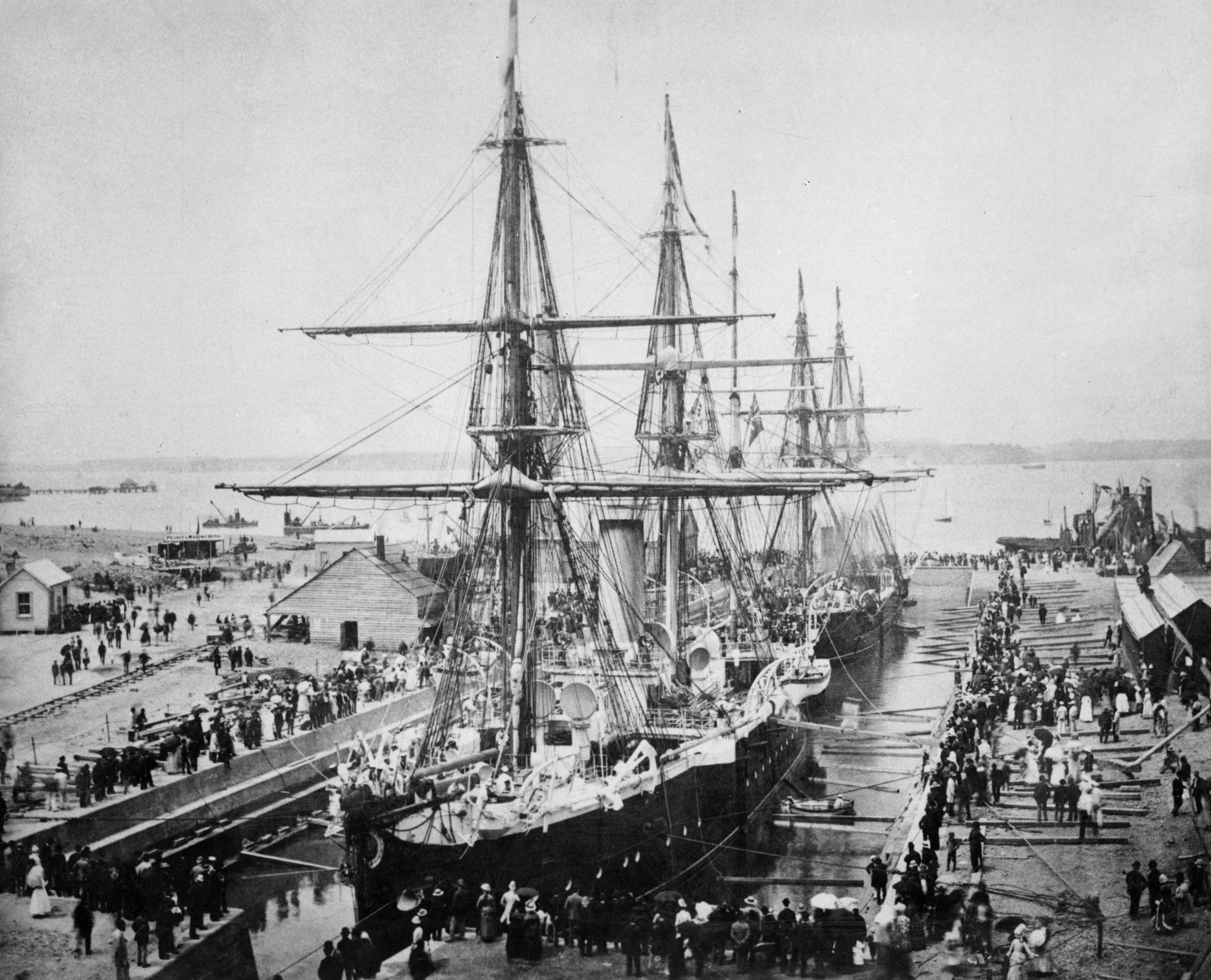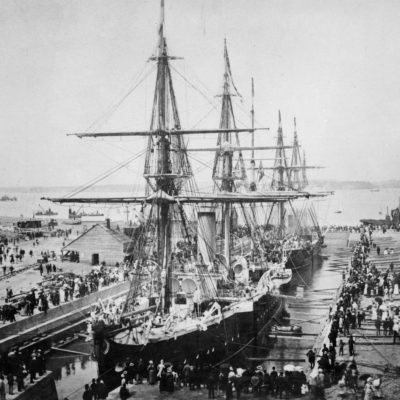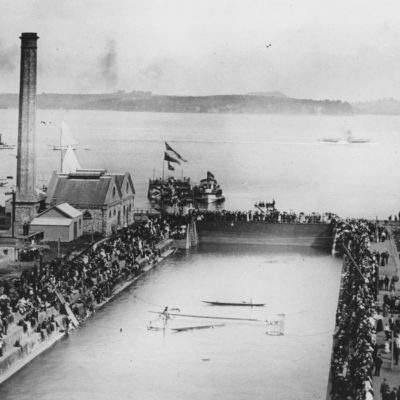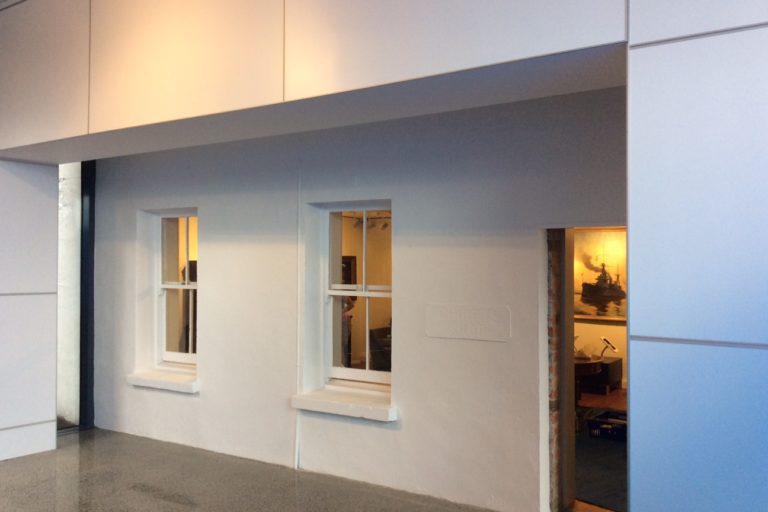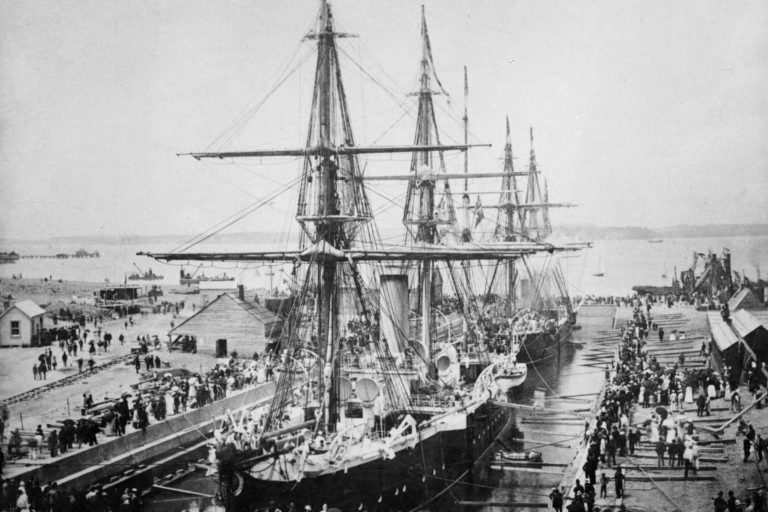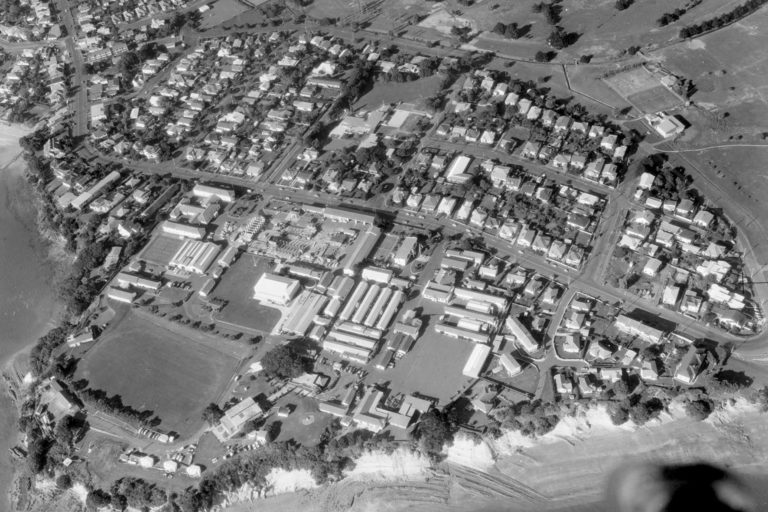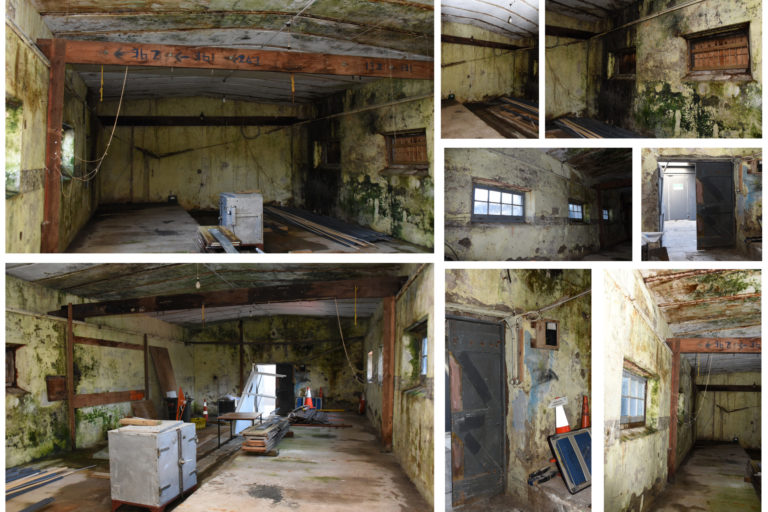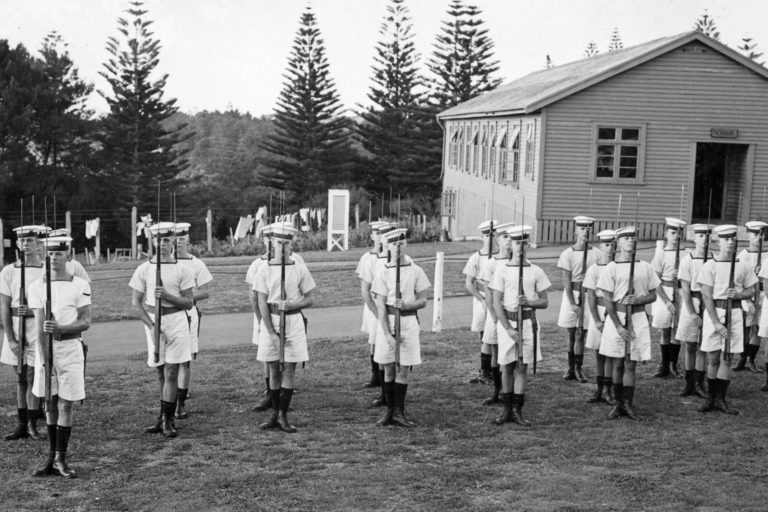The dry dock, along with the pump house, are two of the oldest and most significant maritime related structures in New Zealand. Its construction was one of the largest and most difficult engineering works undertaken in New Zealand during the 19th century.
In May 1881 the Auckland Harbour Board (AHB) voted in favour of Devonport. Five days later instructions were issued to the officers of the board to purchase Calliope Point and commence surveying. It was agreed by the Board that the dock would be constructed for the use of the Royal Navy as a repair and maintenance facility for the Fleet that protected the Empire. Calliope dry-dock would replace the Sturdee Street dry-dock which was built in 1878.
In 1885 work commenced under the architect William Errington. The work was carried out by the contractor Pierce Lanigan. The spoil was used to reclaim land on both sides of dock. The 1.5 bricks used were made locally. Rock was supplied from the Auckland Harbour Board quarry on Rangitoto Island. The original dock blocks were pohutukawa. The original dimensions were:
Length 162m
Breadth 23m
Width at dock level 20m
On 16 February 1888, the official opening was held. As arranged HMS Calliope and Diamond docked down, Calliope breaking a ribbon stretched across the dock. Unfortunately, the six casks of beer provided for refreshment of ships’ crews and dock guard led to a brawl ending proceedings.
In May 1899 an agreement was signed between Admiralty and Auckland Harbour Board for use of the dock. The Admiralty would have priority use of the dock for 30 years and the AHB would affect repairs to the dock and upkeep workshops and machinery, which would be available for use by the Navy. In 1903 a new agreement had to be negotiated as the repairs cost more than the AHB had realised in 1899. The annual fee paid by the Admiralty would increase and the AHB Harbour Board to reconstruct and equip the dock, jetty, deep water berth and building. That year the lower altar of the dock was cut back to allow docking of the largest ships serving New Zealand – Corinthic, Ionic, and Athenic In 1906 SS Mamari fell over when docking down killing 3 men and injuring 30.
In 1909 the lower altars, i.e. all of No.2 and half of No.3 were cut back to allow docking of modern broad beam vessels. In 1911 the Admiralty received £68.16.1 as profit share of facilities. This was the first and only time such a payment was made.
By 1913, the Calliope Dock was considered to be out of date and incapable of taking modern vessels. Two years later, RMS Niagara had to make an emergency docking. Minor modifications were required to the head of dock to accommodate overhang of bow and the ship’s rudder had to be hard over to allow the cassion to close.
In 1920s the New Zealand government took over the Admiralty payments. By 1927, the Navy considered that the dock and workshop equipment to be out of date and require modernising, which disputed by the Harbour Board. The dual control arrangements considered to be unsatisfactory for both parties. This debate continued into the 1930s and reached a low point when the replacement of the D-class cruisers by the Leander-class needed further alterations and new machinery. In 1936, the recess at head of dock was lengthened and widened and the dock itself was lengthened to take the Leander class cruisers.
During the Second World War, a new cassion was fitted in 1942 and in 1943, with funding from the United States Navy; the dock was lengthened to accommodate USN Indianapolis class cruisers.
The dimensions at this time were:
Length 185m
Breadth 24m
In the 1960s discussions in respect of the Crown acquiring the dock were held but nothing was done until 1986 when the Dock was sold to the Ministry of Defence, being officially handed over on 13 February 1987. In August 1994 the dockyard, including dock, leased to Babcock-Skellerup. Modifications were undertaken in 1996 to accommodate ANZAC class frigates, this included new pumping arrangements, a new cassion and extending the depth of the rudder and sonar pits.
In 2004, Calliope Dock was leased to VT Fitzroy, now Babcocks.

